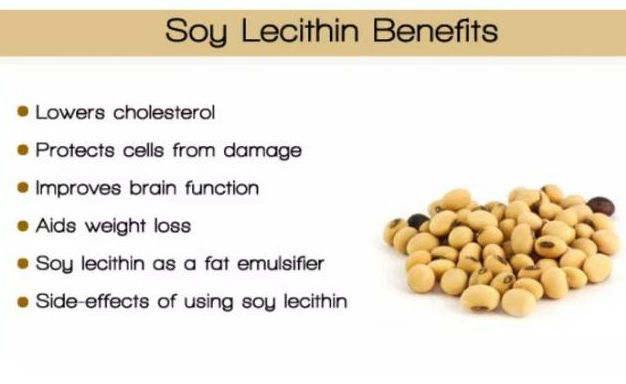BOURSESSENEGAL – When it comes to food ingredients, soy lecithin often appears on labels, but what exactly is it? Many people are curious about its benefits and uses in various products. This comprehensive guide will explore what soy is, its health benefits, how it’s used in food, and its potential drawbacks.
What Is Soy Lecithin?
Soy lecithin is a natural emulsifier derived from soybeans. It’s extracted during the oil-refining process and serves multiple functions in food and other industries. As an emulsifier, it helps blend ingredients that usually don’t mix well, such as oil and water. You’ll often find soy in products like salad dressings, chocolate, and baked goods.
The Composition of Soy Lecithin
Soy lecithin contains phospholipids, which are vital for cellular function. These phospholipids include:
- Phosphatidylcholine
- Phosphatidylethanolamine
- Phosphatidylinositol
These compounds contribute to lecithin’s emulsifying properties and health benefits.
Health Benefits of Soy Lecithin
Incorporating soy lecithin into your diet can offer several potential health benefits. Let’s take a closer look at some of them.
1. Supports Heart Health
One of the significant benefits of soy is its potential to support heart health. Research indicates that the phospholipids in soy can help lower cholesterol levels. Lowering LDL (bad cholesterol) while raising HDL (good cholesterol) can lead to better overall heart health.
2. Aids in Digestion
Soy may also promote healthy digestion. As an emulsifier, it helps break down fats, making it easier for your body to digest them. This can be particularly beneficial for individuals with digestive issues.
3. Enhances Brain Function
The phosphatidylcholine in soy plays a crucial role in producing acetylcholine, a neurotransmitter involved in memory and cognition. Some studies suggest that adequate levels of acetylcholine can enhance memory and cognitive function, making soy a potential ally for brain health.
4. Supports Liver Function
Some research suggests that soy may support liver health by preventing fat accumulation in liver cells. This can be particularly important for those at risk of fatty liver disease.
Common Uses of Soy Lecithin
You’ll find soy lecithin in a wide array of products across various industries. Here are some common uses:
1. Food Industry
In the food industry, soy lecithin serves multiple purposes:
- Emulsifier: It helps mix ingredients like oil and water in products such as mayonnaise, salad dressings, and chocolate.
- Stabilizer: It prevents the separation of ingredients, ensuring consistent texture and flavor.
- Fat Substitute: In some low-fat products, soy acts as a fat replacer, improving mouthfeel without adding calories.
2. Baking
In baking, soy improves dough texture and shelf life. It enhances moisture retention, leading to softer baked goods. You’ll find it in cookies, cakes, and breads.
3. Nutritional Supplements
Soy is a popular ingredient in many nutritional supplements. It can help improve the bioavailability of fat-soluble vitamins and nutrients.
4. Cosmetics and Personal Care
Beyond food, soy is also used in cosmetics and personal care products. Its emulsifying properties make it ideal for lotions, creams, and other products that require a stable blend of ingredients.
Potential Drawbacks of Soy Lecithin
While soy lecithin has numerous benefits, it’s essential to consider potential drawbacks.
1. Allergies
Some individuals may have soy allergies, which can lead to allergic reactions when consuming products containing soy . If you have a soy allergy, it’s crucial to avoid this ingredient.
2. Genetically Modified Organisms (GMOs)
Many soybeans are genetically modified, and soy can come from GMO sources. If this is a concern for you, look for organic or non-GMO labeled products.
3. Estrogenic Effects
Soy products, including soy , contain phytoestrogens. Some research suggests that excessive consumption of these compounds might affect hormone levels, though moderate intake is generally considered safe for most people.
How to Incorporate Soy Lecithin into Your Diet
Incorporating soy into your diet can be simple and beneficial. Here are some tips:
1. Read Labels
When shopping for processed foods, check the ingredient list. Soy often appears in products like chocolates, margarine, and baked goods.
2. Use as a Supplement
Soy is available in granule and liquid forms. You can add it to smoothies, yogurt, or oatmeal for a nutrient boost.
3. Explore Homemade Options
If you enjoy cooking, consider making your own salad dressings or sauces using soy as an emulsifier. This way, you can control the ingredients and ensure quality.
Conclusion: The Versatility of Soy Lecithin
In summary, soy lecithin is a versatile ingredient that offers numerous health benefits and practical applications. With its role as an emulsifier in the food industry, its potential to support heart and brain health, and its presence in supplements, soy holds a valuable place in modern diets.
While it’s essential to consider individual dietary needs and potential allergies, incorporating soy lecithin can enhance your meals and improve overall health. As always, consult with a healthcare provider if you have specific concerns about dietary changes.
By understanding more about soy , you can make informed decisions and enjoy its benefits while ensuring a balanced and nutritious diet. Embrace the versatility of this ingredient, and you may discover new ways to enjoy its advantages in your everyday meals
REFERENCE : https://www.health.com/



